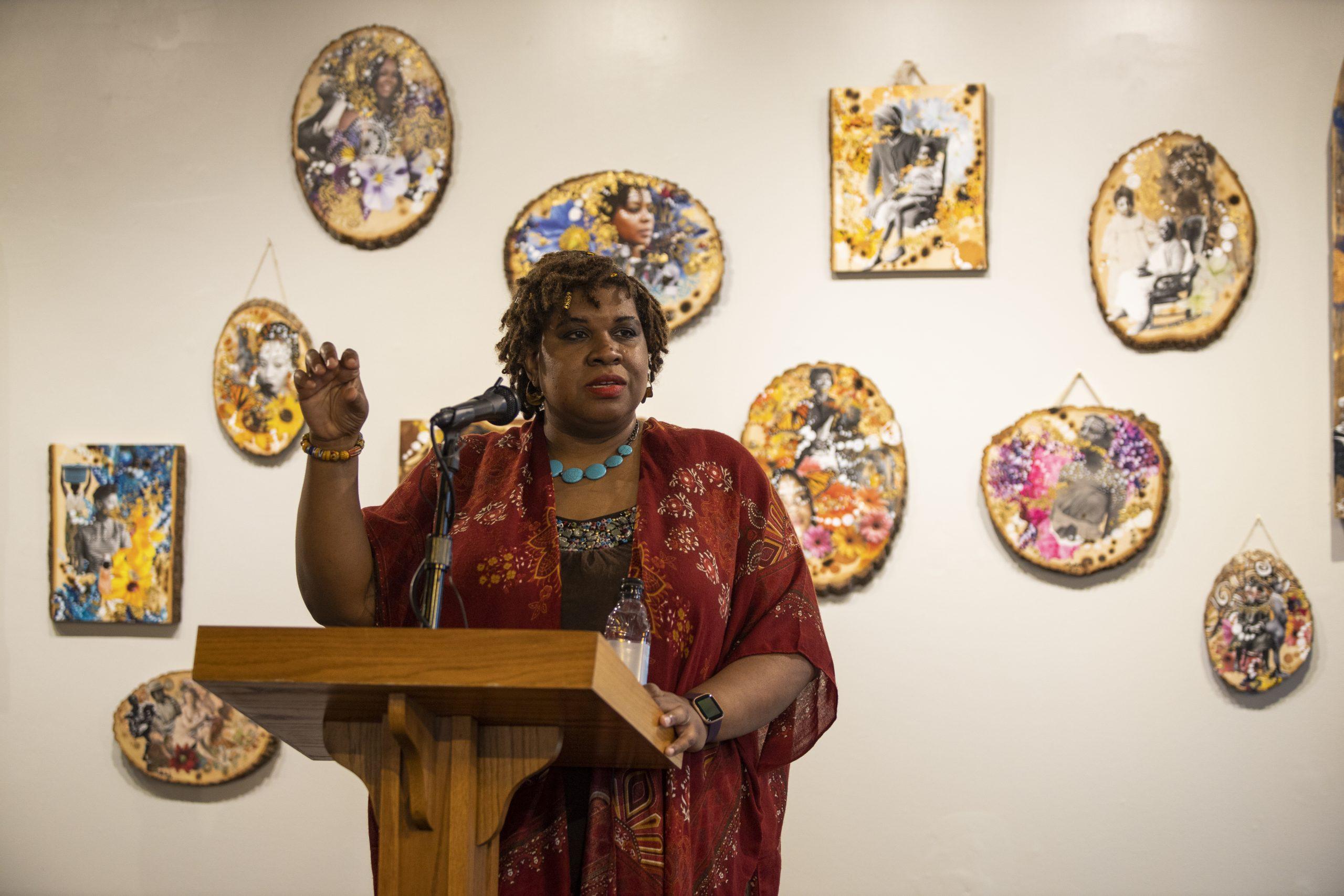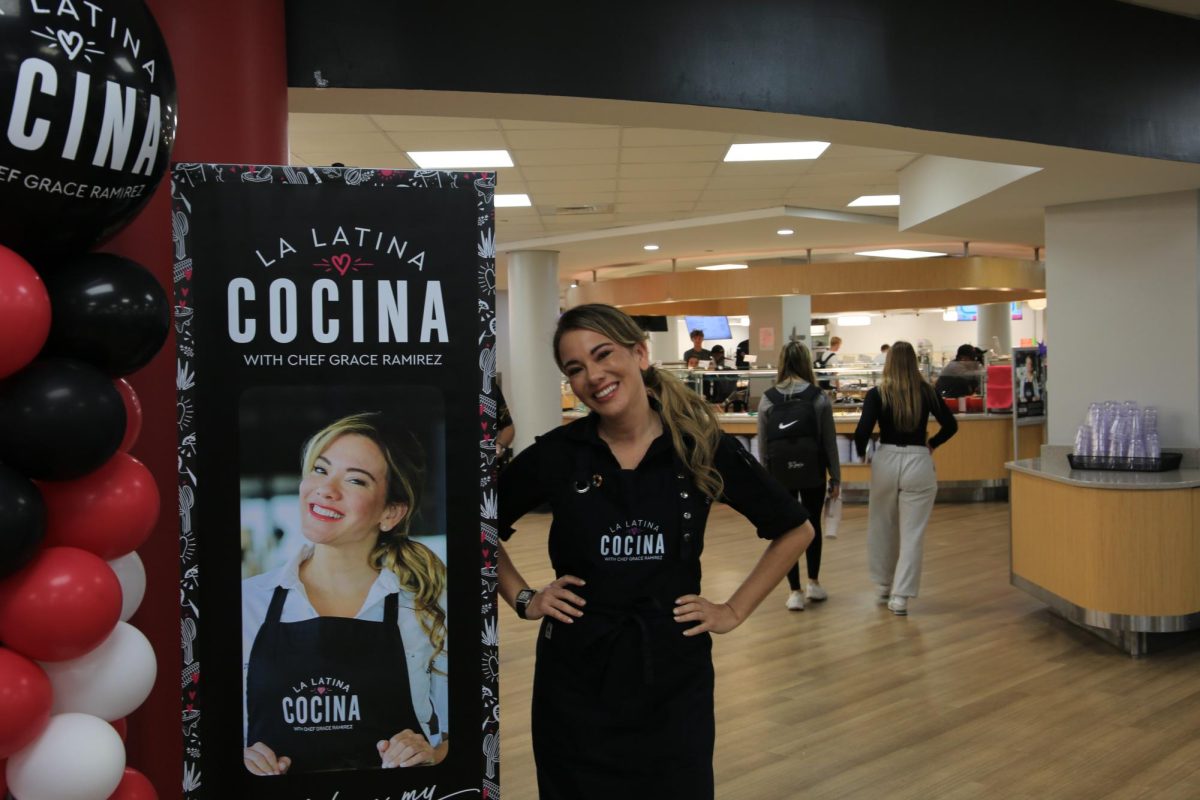“Just like a Woman,” an exhibition by Lavett Ballard, M.F.A., is currently displayed in Merion Hall until Oct. 1. Ballard utilizes collages and mixed mediums to share the powerful and unknown stories of Black women throughout history.
Ballard created the theme of the exhibition to showcase the often underappreciated work and responsibilities of women. She chose pieces that illustrate women’s vital role in society, as matriarchs, healers, teachers and leaders.
One piece in the collection, “We Shall Not be Moved,” which was commissioned by Time Magazine for the 2020 Woman of the Year edition, is being exhibited for the first time at St. Joe’s. Ballard said this piece, based on the women of the Montgomery Bus Boycott of 1955, with Rosa Parks as a central figure, truly represents the spirit of the exhibition.

“We really look at Rosa as the spearhead for [the civil rights] movement, but there were other women doing the same thing she did, that didn’t fit what people thought would be the mold of someone people could follow and back up,” Ballard said.
Ballard made a point to include Aurelia Browder, Claudette Colvin and Mary Louise Smith, three of the women who helped launch the Montgomery Bus Boycotts, in “We Shall Not be Moved.” They are represented in images, newspaper headlines and clippings from their actual court cases.
Taylor Stokes ’22, the University Student Senate’s secretary of inclusion and equity, said Ballard’s work is not only important to highlight issues of representation at St. Joe’s, but it was also personally meaningful.”
“I would say it’s very powerful coming from a predominately white institution,” Taylor Stokes said. “I always get that representation is important and sometimes, if there is no representation in artwork, or representation in faculty, or representation in diverse leaders, people may not feel comfortable.”
The canvas for many of Ballard’s pieces are reclaimed wooden fences which represent division, and the incomplete understanding between society and others’ stories.
“[Fences] can keep people in, but they can also keep people out,” Ballard said. “I can have a full blown image on one side of the fence and tell the stories on that side, but then I can flip it on the other side and just share a little nugget of the story on the opposite side. There’s always more to the story, just like people.”
Nicole Stokes, Ph.D., associate provost for diversity, equity and inclusion in the Office of Inclusion and Diversity (OID), said she hopes that people who visit the exhibit are inspired by Ballard’s art.

“I’m hoping any person of a different identity who walks through this space can say, ‘Wow, is that fencing? I never would have thought to put art on a wooden fence,’” Nicole Stokes said. “And that it opens up creative thought and maybe inspires them to do a little more for themselves or for others.”
With increased protests in support of The Movement for Black Lives this summer, the Art and Art History Department wanted to support the fight for racial justice on campus, according to Jeanne Bracy, gallery curator.
“Lavett’s work is storytelling through art, and the images and magazine cutouts she uses shares the story of a Black female artist,” Bracy said.
Nicole Stokes said OID’s collaboration with the art department to host the exibition also included purchasing one of Ballard’s paintings called “Redbone.” Stokes said this was a way to demonstrate intentionality about showing Black women’s work.
“This will be an amazing opportunity to start us with that long-term goal of bringing more women of color, bringing a different image to art,” Nicole Stokes said. “I appreciate a lot of what Professor Ballard said about African American women often being ignored or not considered as subject matter for art.”
Ballard also shared the images of anonymous Black women because they are often exploited and photographed as objects, not people.
“I purposefully use anonymous women because when it comes to Black women, a lot of times we were objectified in photos,” Ballard said. “I want to give the women a voice that the photographers didn’t give them.”
Ballard hopes that viewers will search for the true message of her work.
“I load my images with so much paint and extra adornments so that you have to sift through it all to find that one part in the story that you can relate to and take that with you,” Ballard said.
Kaylah Hernandez ’23 contributed to this article.

















































